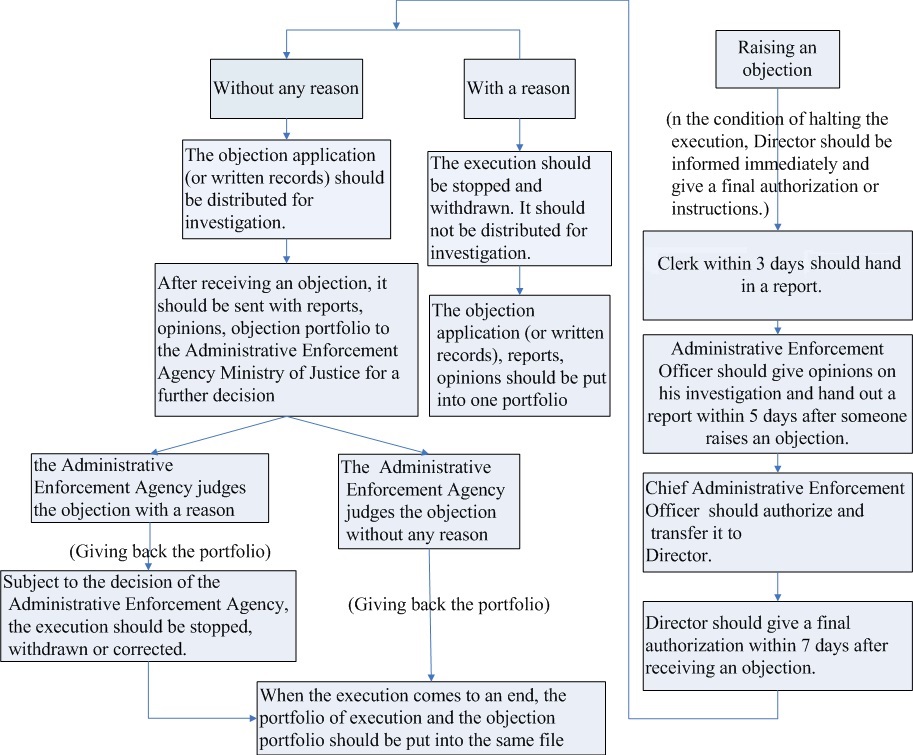Closing status of execution cases
- Publication Date :
- Last updated:2023-06-16
- View count:2432
The procedure to raise an objection: 1. An obligor has to raise an objection. (As soon as the obligor asks to withdraw his or her objection, it is necessary to inform the Director, who will decide the effect of the withdrawal.) 2. After receiving an objection, the Clerk should hand in a report within 3 days to the Administrative Enforcement Officer. Then, within 5 days, the Administrative Enforcement Officer should give opinions on his investigation and hand a report to the Chief Administrative Enforcement Officer. Afterwards the Chief Administrative Enforcement Officer should decide whether to authorize and transfer it to the Director who should give a final authorization within 7 days. 3. Authorization with a reason: The execution should be halted immediately and withdrawn or corrected. In addition, the case should not be distributed for further investigation. 4. Authorization without any reason: The objection application (or a written record) is distributed for investigation. Within 10 days, the relevant reports, opinions, the portfolio of the objection application and the execution portfolio are delivered to the Administrative Enforcement Agency Ministry of Justice for examination. 5. Once the Administrative Enforcement Agency Ministry of Justice authorizes the objection without any reason it passes on the portfolio. When finalizing the law case, the execution portfolio and the portfolio of the objection application are supposed to be filed together. 6. When the Administrative Enforcement Agency Ministry of Justice gives reasons to turn down the objection, the execution ordered will be halted. Moreover, the execution will be withdrawn or corrected.
|
|
List 1: Flowchart for raising an objection
|
|
The procedure to transfer the case to organizations: 1. The transferring organization sends cases to the Mail Room. After making sure of the number of cases, the Mail Room distributes cases to the sections in charge. 2. The Clerk takes charge of the preliminary examination of new cases and transfers new questionable cases to the Administrative Enforcement Officer to make a second examination. 3. A second examination is provided for those cases sent to the wrong judicial office: enclosed with the portfolio, it should be mailed to the correct judicial executive office. Then the case should be concluded with a final portfolio. 4. The second examination is provided for those cases which cannot be executed legally and cannot be corrected by referral organizations to be legalized: such cases should be withdrawn to referral organizations and be filed. 5. The second examination is provided for those cases which cannot be executed legally but corrected by referral organizations and become legal cases: referral organizations should be informed to correct cases within a certain period of time. If not corrected within the period of time, cases are to be sent back to referral organizations for filing. If corrected, cases will be put into the process of legal execution. 6. The second examination is provided for cases which can be executed legally: such cases are entered into the executive process. |
|
List 2: Flowchart for an organization’s transferring a case to the other organization
|





